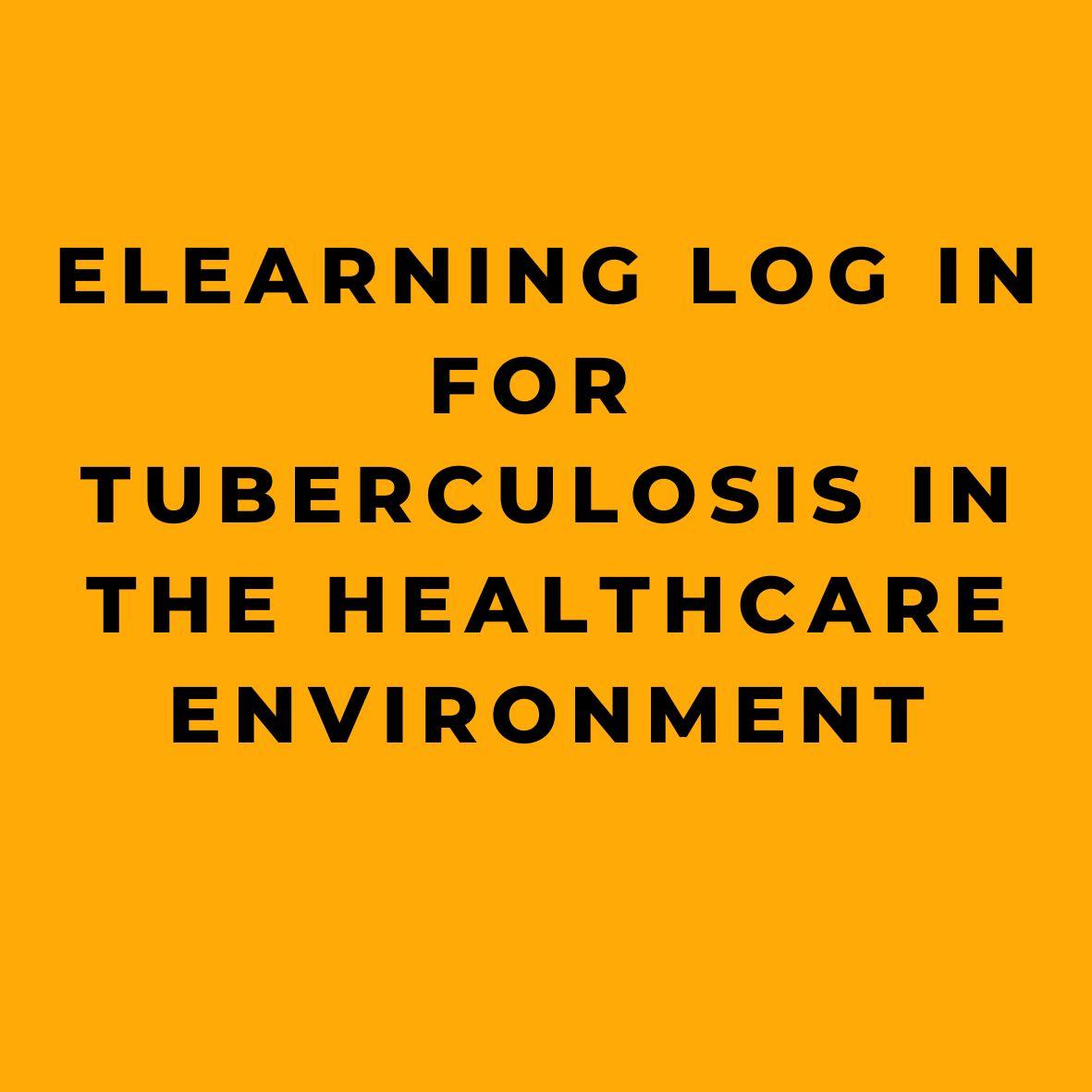eLearning Log In for Tuberculosis in the Healthcare Environment
I’m here to talk to you today about tuberculosis in the healthcare environment. As you know, TB is a disease that was once believed to be eradicated in the US due to the effectiveness of antibiotics. Unfortunately, the mid-1980s saw the resurgence of the disease, and TB is once again a significant health concern, killing over a million people worldwide every year.
Healthcare professionals are on the front lines in the fight against TB, and they face a higher risk of exposure to the disease. The medical industry has made efforts to prevent and control the spread of TB, and the CDC has established guidelines to prevent its transmission. The guidelines are regularly updated to ensure that the most up-to-date information and techniques are available to everyone who needs to fight TB.
In the US, over 11 million people carry tuberculosis in a latent, noninfectious form, and thousands of these people will eventually develop the active form of the disease, which can be fatal. Worldwide, an estimated one-third of the world’s population carries the TB bacteria. Every year, approximately 9 million people develop the active form of the disease, with over a million dying from it.
So what has caused TB to come back so strongly after it seemed to have been “down for the count” for a while? There are several reasons. Firstly, TB is highly contagious and easily spread, especially among individuals with weakened immune systems. As a result, the spread of AIDS has been a significant factor in the resurgence of TB. AIDS suppresses the immune system, making people with HIV more prone to developing TB.
Increased use of recreational drugs has also contributed to the resurgence of TB. IV drug abusers are at a higher risk of developing TB because they are more likely to have diseases such as AIDS that weaken their immune systems. They also frequently have prolonged contact with fellow drug abusers who may have tuberculosis themselves.
Immigrants from countries with high levels of active TB have also played a role in the growth of the disease in the US. Another factor is that people with TB often end up in homeless shelters, prisons, residential care facilities for the elderly, and other crowded institutional environments. If these facilities do not have adequate TB control programs in place, the infection can spread very easily.
So what exactly is tuberculosis? TB is caused by a type of bacteria called Mycobacterium tuberculosis. The bacterium is spread through the air in microscopic droplets created whenever an infected person coughs, sneezes, speaks or otherwise exhales. In healthcare environments, the droplets can also be produced during certain high-hazard medical procedures, such as bronchoscopies, intubation, and sputum induction.
The more infectious droplets there are in the air, the greater the chance that someone will breathe them in and become infected. Infection occurs in two stages. First, the TB bacteria are inhaled and begin to spread throughout the body. The bacteria spread relatively slowly, and a healthy immune system can usually stop it within two to ten weeks. During this time, the body’s natural defenses attack the bacteria and render them inactive. When the immune system keeps the TB bacteria in check like this, the infection is known as latent TB or LTB. People with latent TB do not suffer any adverse effects and are not contagious. However, eventually, about 10% of people with latent tuberculosis will go on to develop the active form of the disease.
Training plays a major role in raising awareness of the tuberculosis problem and providing healthcare workers like you with the information you need to protect yourself from infection. Topics covered in this training include the specific TB transmission hazards that you will face on the job, the current status of TB infections at your facility, and what steps you should take to keep TB from spreading to others. In addition to training, there are several other measures that healthcare workers can take to reduce their risk of TB infection.
One important measure is the use of personal protective equipment (PPE). PPE includes items such as gloves, masks, and gowns that can help prevent the transmission of TB from infected patients to healthcare workers. It’s important to follow proper PPE protocols and to ensure that PPE is used consistently and correctly.
Another key step is early detection and treatment of TB infections. Healthcare workers should be aware of the signs and symptoms of TB, such as coughing, fever, and night sweats, and should seek medical attention promptly if they experience these symptoms. Early detection and treatment of TB can help prevent the spread of the disease to others.
In addition to protecting themselves, healthcare workers can also play a crucial role in preventing the spread of TB to patients and the community. This can include educating patients about TB and encouraging them to seek treatment if they experience symptoms, as well as implementing infection control measures to reduce the risk of transmission within healthcare facilities.
Preventing the spread of TB requires a coordinated effort that involves healthcare workers, patients, and the community. By taking steps to protect themselves and others, healthcare workers can help ensure that TB is controlled and ultimately eliminated.
Are you in the healthcare industry and concerned about the risks of tuberculosis exposure? Look no further than our training products on “Tuberculosis in the Healthcare Environment.” Our comprehensive courses cover the changes in respiratory protection requirements, including the use of new classes of NIOSH approved respirators and HEPA masks.
Our courses are specifically designed to assist facilities and operations with employees at risk of exposure to tuberculosis, and educate employees on the nature of the disease and how to protect themselves from infection. With a variety of course formats, including micro-learning, full-length online courses, DVDs, and interactive CD courses, we offer flexibility in training to fit your needs.
Topics covered in our courses include the epidemiology and symptoms of tuberculosis, modes of transmission, the CDC guidelines, exposure control plans, prevention practices, administrative and engineering controls, selection and use of personal protective equipment, and more. All courses are available in both English and Spanish.
Our online courses are constructed to keep employees engaged and involved in the learning process, featuring full-motion HD video filmed in real-life workplace settings and interactive quiz questions. And, with our remediation training, employees can quickly review content they missed during quizzes, making training more efficient and effective.
Don’t just take our word for it, though. Our training activity is tracked and recorded, allowing managers to monitor their employees’ progress and ensuring that you are getting the most out of our courses. With over 170 courses on important topics like regulatory compliance, human resources, and general safety topics, Online Safety Trainer is your one-stop-shop for comprehensive and engaging training. Invest in your employees’ safety and knowledge today with Online Safety Trainer’s “Tuberculosis in the Healthcare Environment” training products.










